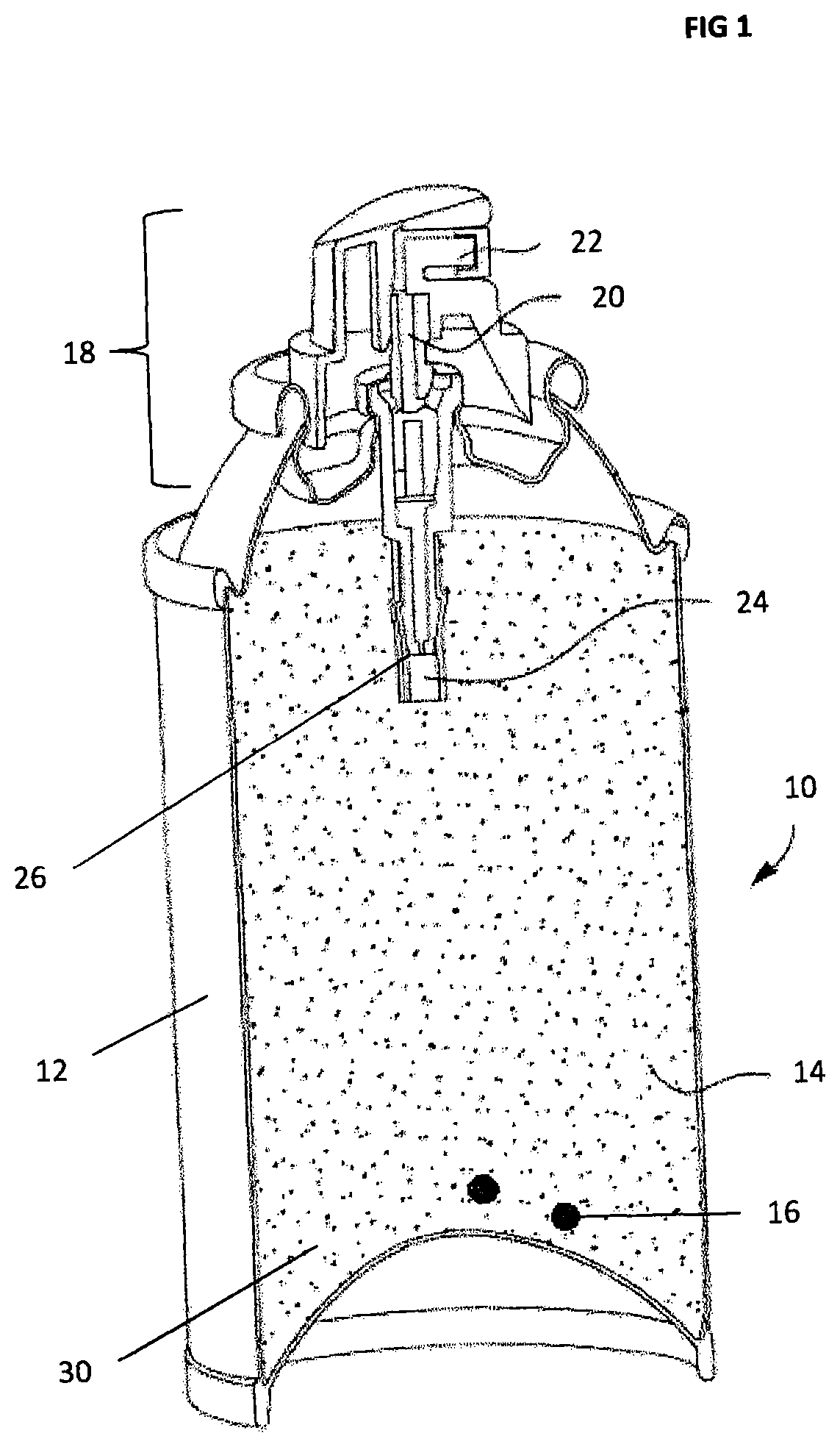Gas storage devices
a technology of gas storage and storage devices, which is applied in the direction of physical/chemical process catalysts, metal/metal-oxide/metal-hydroxide catalysts, transportation and packaging, etc., can solve the problems of freezing burns, system damage, and distressing (and potentially harmful) for pets
- Summary
- Abstract
- Description
- Claims
- Application Information
AI Technical Summary
Benefits of technology
Problems solved by technology
Method used
Image
Examples
example 1
Effect of Catalyst on Carbon Monoxide Levels
[0070]Canisters (12) of various sizes under 1 l were assembled as set out below:[0071]a) A pellet or two of Hopcalite (16) were added to an empty (steel) canister (12) such that the net concentration of Hopcalite was above, about, 0.5% w / w;[0072]b) the canister (12) was filled with granular activated carbon (14), preferably using vibration to maximise the packing;[0073]c) a filter (24) was fitted to the valve stem (26) of a valve assembly (18), and the protected valve stem (24,26) was inserted into the activated carbon (14);[0074]d) the valve assembly (18) was crimped to the canister (12); and[0075]e) the device (10) was gassed with a proprietary gasser using oxygen (30).
[0076]On analysis, post filling, it was noted that a small quantity of carbon monoxide appeared to form from the interaction of the oxygen, at high pressure, with the highly activated carbon surface. Tests showed that after storage for 1 month, at room temperature, the car...
example 2
Effect of Canister Type on Heat Transfer and Device Failure
[0081]When a conventional canister of aluminium construction was gassed with carbon dioxide, the temperature, due to the exothermic adsorption of carbon dioxide on activated carbon, was noted to rise by 46.5° C. This rapid temperature rise caused the seal (usually rubber) between the canister and valve assembly to deform, causing leakage and premature depressurisation of the device.
[0082]In consequence, and in order to avoid over-heating and the risk of over pressurising, it was necessary to introduce the gas in a stepwise manner, allowing the device to cool between steps.
[0083]However, when a similar-sized steel canister was gassed with carbon dioxide it was noted that the temperature rise of the canister was only 3.7° C., and in consequence the applicant was able to fill the device in a single step procedure, without the risk of stressing the rubber seal or over pressurising the container.
[0084]The results of the test are ...
PUM
| Property | Measurement | Unit |
|---|---|---|
| Fraction | aaaaa | aaaaa |
| Density | aaaaa | aaaaa |
| Volume | aaaaa | aaaaa |
Abstract
Description
Claims
Application Information
 Login to View More
Login to View More - R&D
- Intellectual Property
- Life Sciences
- Materials
- Tech Scout
- Unparalleled Data Quality
- Higher Quality Content
- 60% Fewer Hallucinations
Browse by: Latest US Patents, China's latest patents, Technical Efficacy Thesaurus, Application Domain, Technology Topic, Popular Technical Reports.
© 2025 PatSnap. All rights reserved.Legal|Privacy policy|Modern Slavery Act Transparency Statement|Sitemap|About US| Contact US: help@patsnap.com

